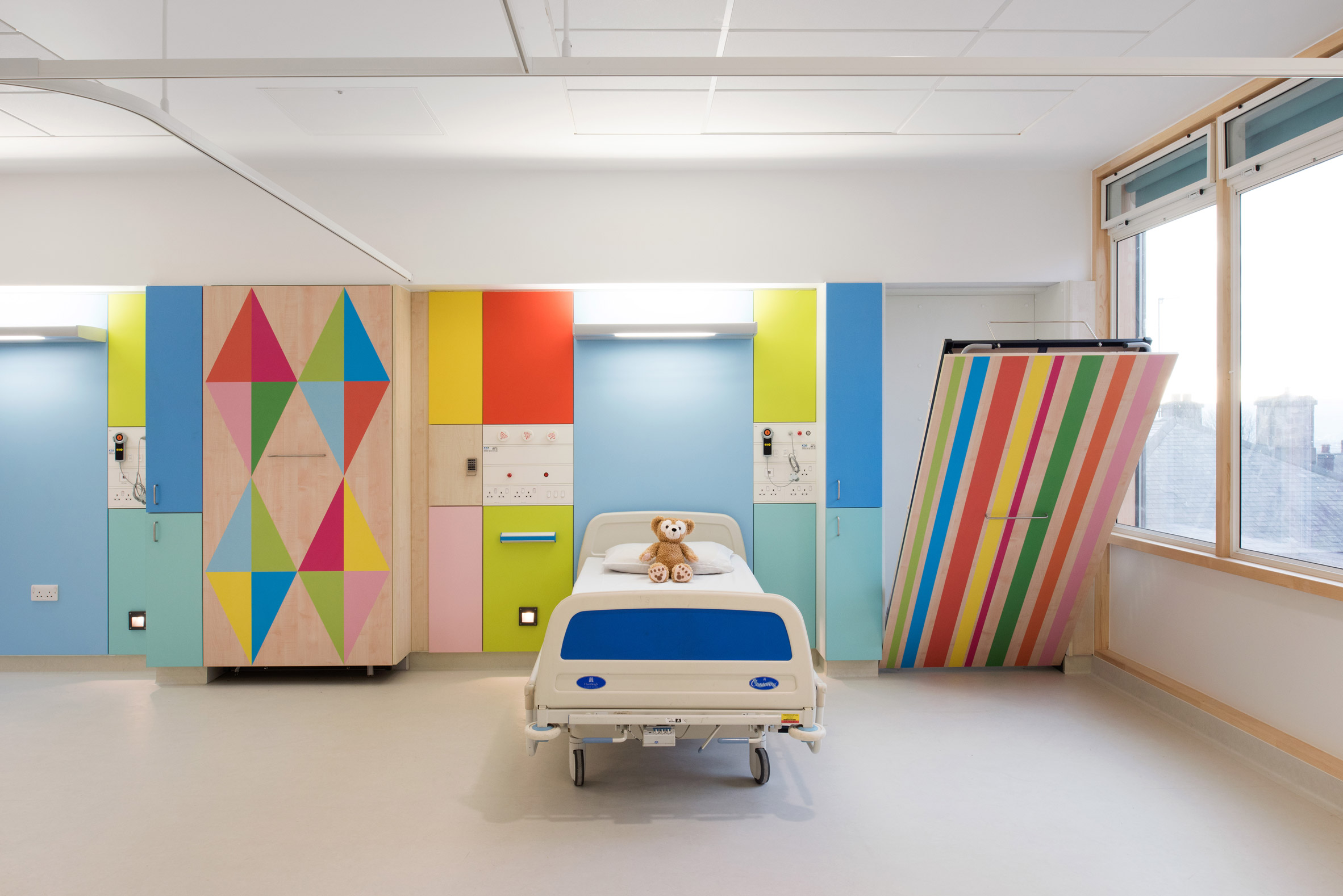As research suggests better healing from better hospital design, creating a calming healthcare environment has become a top priority among hospital executives. Not only does it support healthcare staff's working practices but also demonstrates how interior design can help patients to relax and recover.
Below we've listed three inspiring healthcare designs intended to foster both creativity and wellbeing.
Sheffield Children's hospital, England.
Sheffield Children's hospital in England assigned the London-based artist and designer Morag Myerscough to brighten the hospital environment and create a sense of identity and community based on patient-first thinking.
 Photo courtesy: Dezeen
Photo courtesy: Dezeen
 Photo courtesy: Designboom
Photo courtesy: Designboom
Myerscough told Designboom that she strongly believes in art and the psychology of colour to create a positive hospital environment.
"From the work I've done in healthcare I know that it's phenomenally positive for people to have art in hospitals", Myerscough explains.
"Going into a grim and grey rooms isn't going to make anybody feel good, but going into a room that lets you know that people care about you and they're thinking about you – it's a no-brainer really. It makes people happier and more assured that everybody is concerned about them and wants them to get better."
 Photo courtesy: Dezeen
Photo courtesy: Dezeen
"Going into a grim and grey rooms isn't going to make anybody feel good, but going into a room that lets you know that people care about you and they're thinking about you – it's a no-brainer really."
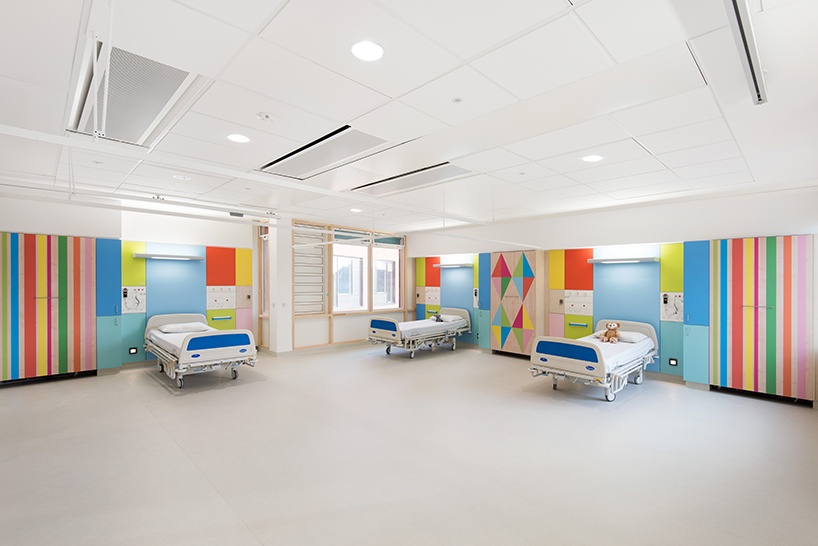
Photo courtesy: Jill Tate
Besides the punchy colour palette and the bold, graphic design concept, a defining characteristic of the space is its lack of medical equipment – most of the cables and medical devices are stored behind the panels to give the space more of a homely, warm and welcoming feel.
 Photo courtesy: Jill Tate
Photo courtesy: Jill Tate
In 2007, three different architecture firms were invited to participate in a parallell assignment for Skandionkliniken, Scandinavia's first cancer clinic for proton therapy. The real architectural challenge of the project was to succeed in merging both all the complex technical construction requirements of a highly advanced radiotherapy facility with the desire to create something more of a home than a medical facility.
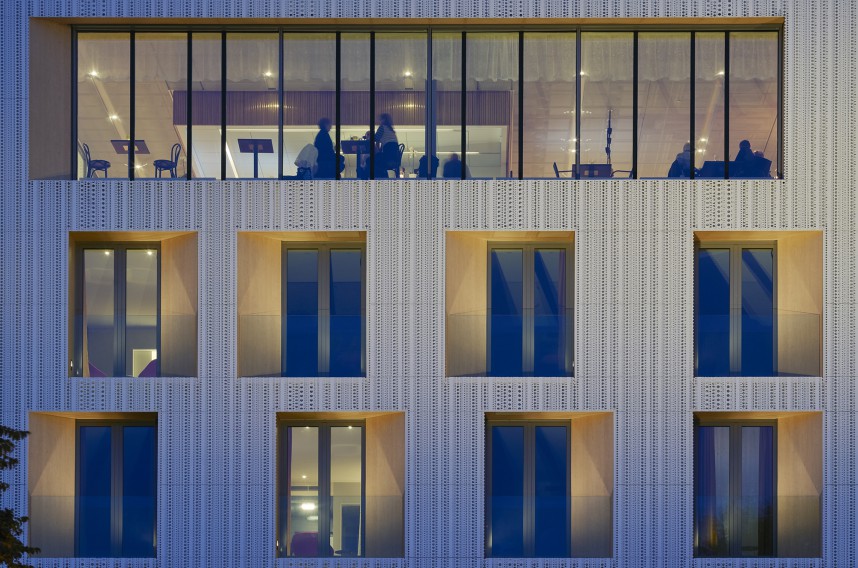 Skandionkliniken from the outside. Photo courtesy: Åke E:son Lindman
Skandionkliniken from the outside. Photo courtesy: Åke E:son Lindman
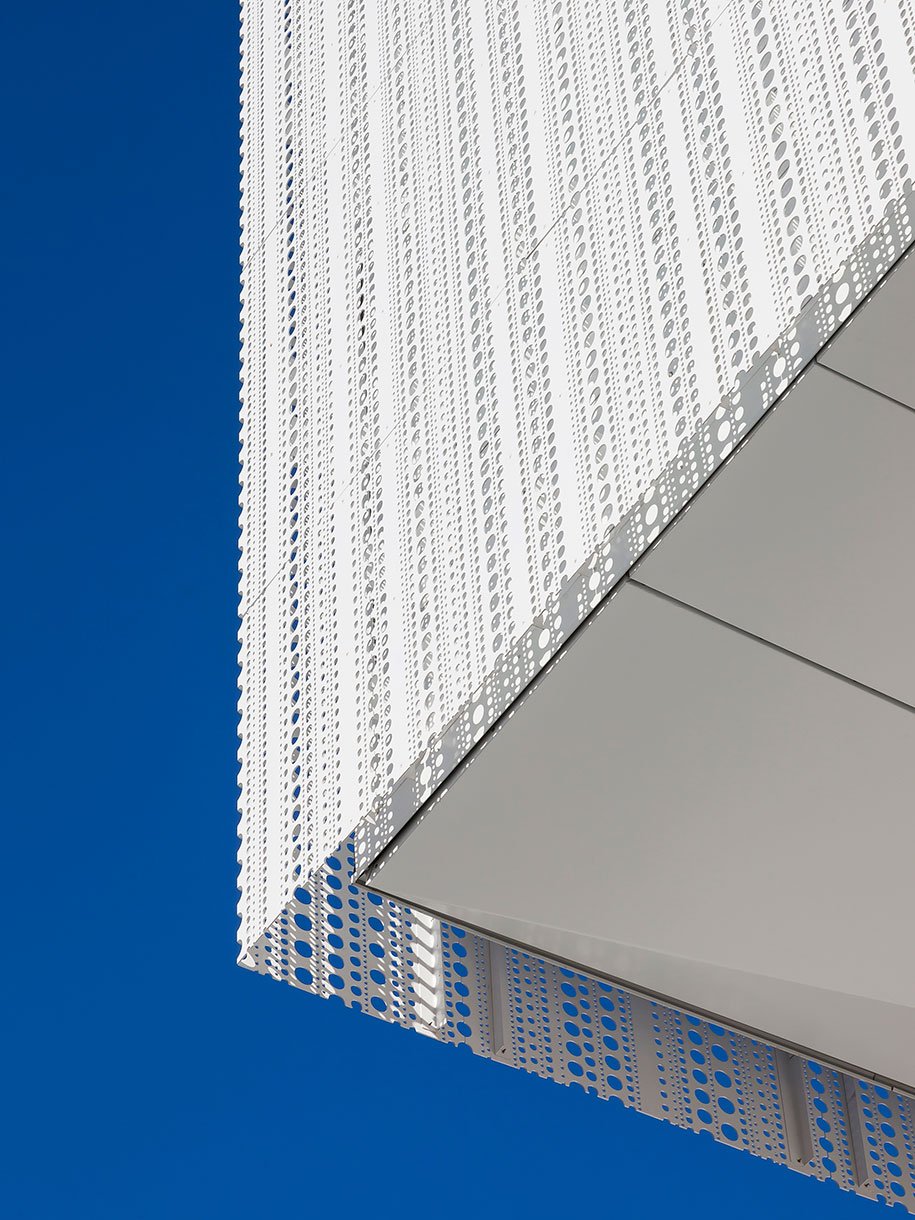 Perforated aluminium sheets with patterns inspired by lace curtains, Photo courtesy: Åke E:son Lindman
Perforated aluminium sheets with patterns inspired by lace curtains, Photo courtesy: Åke E:son Lindman
LINK architect's winning solution did exactly this. By way of building a vertical patterned façade that already greets the visitor from a distance, and by matching interiors with grey, striped, vertical Bolon Botanic Osier flooring – the architects at LINK succeeded in creating a warm, welcoming environment.
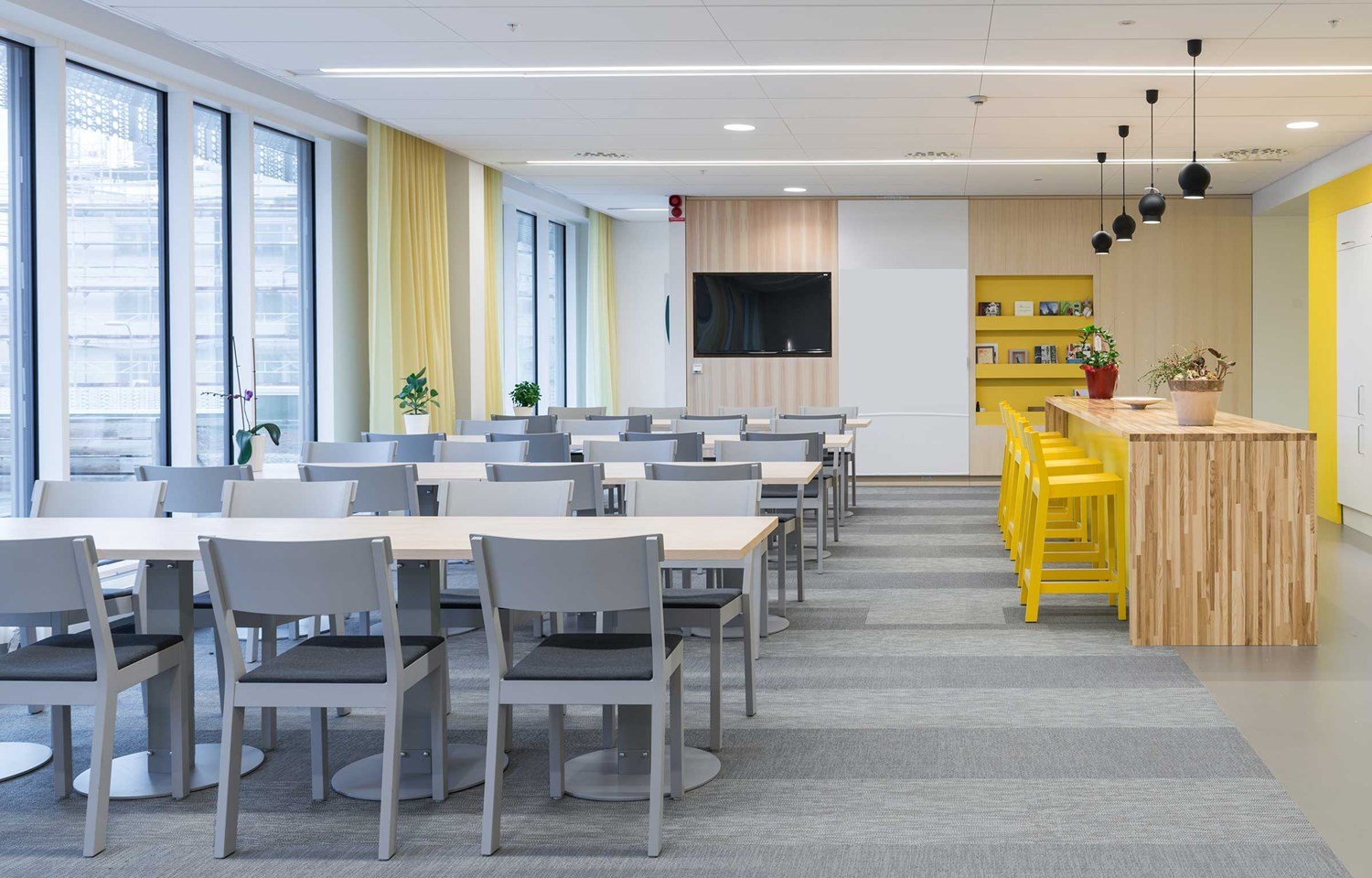 Innovative way of installing Bolon Botanic tiles in vertical stripes.
Innovative way of installing Bolon Botanic tiles in vertical stripes.
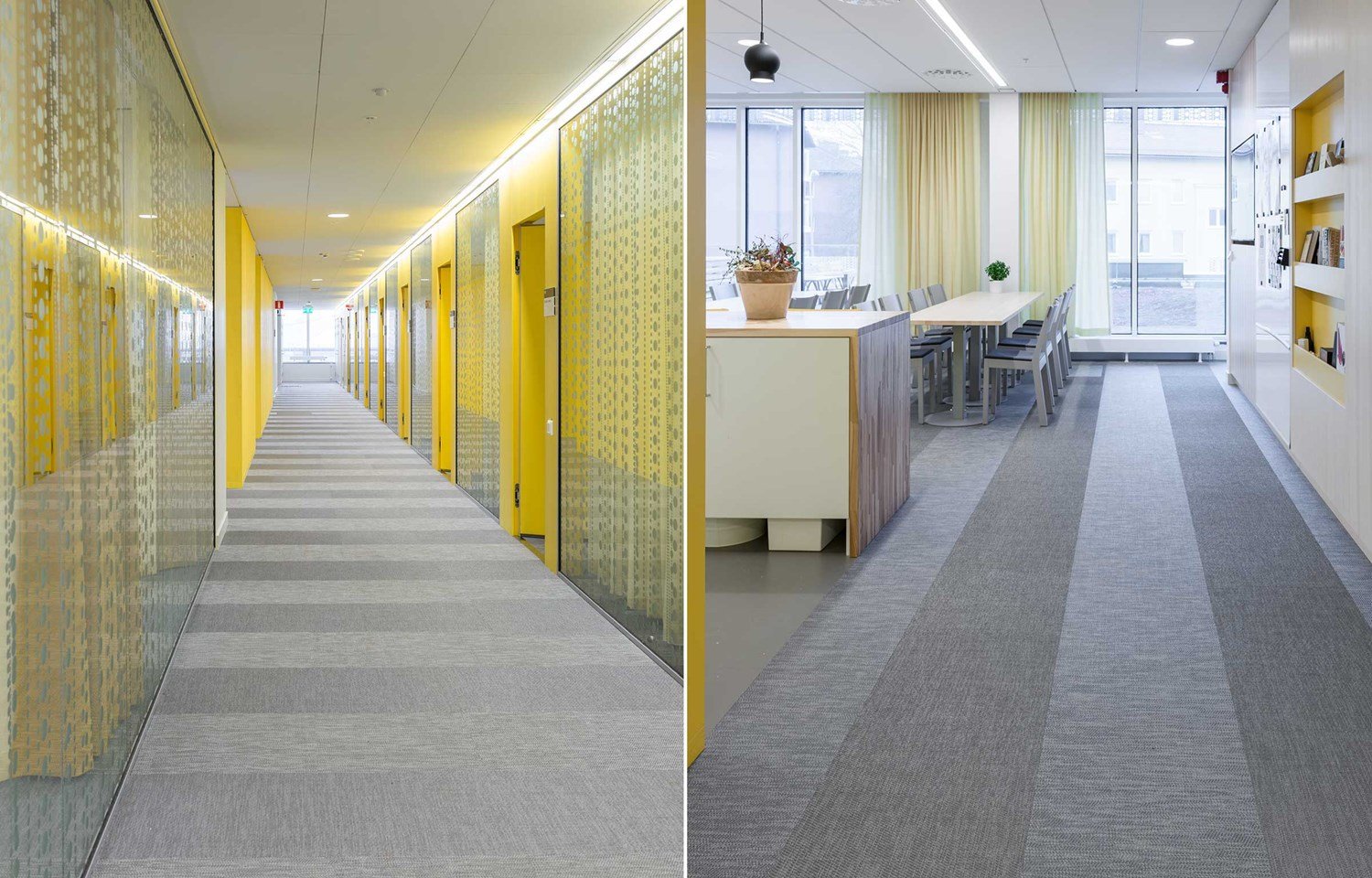 The Botanic Osier flooring captures the light beautifully.
The Botanic Osier flooring captures the light beautifully.
Skandionkliniken was 2015 nominated to The Building of the year.
MEDLY PHARMACY, US
With a light aqua color scheme, clean geometric tiles and a design expression that is both playful and elegant, Sergio Mannino Studio has designed the pharmacy start-up Medly's physical flagship that aims to encourage and facilitate an easy consultation between professionals and visitors.
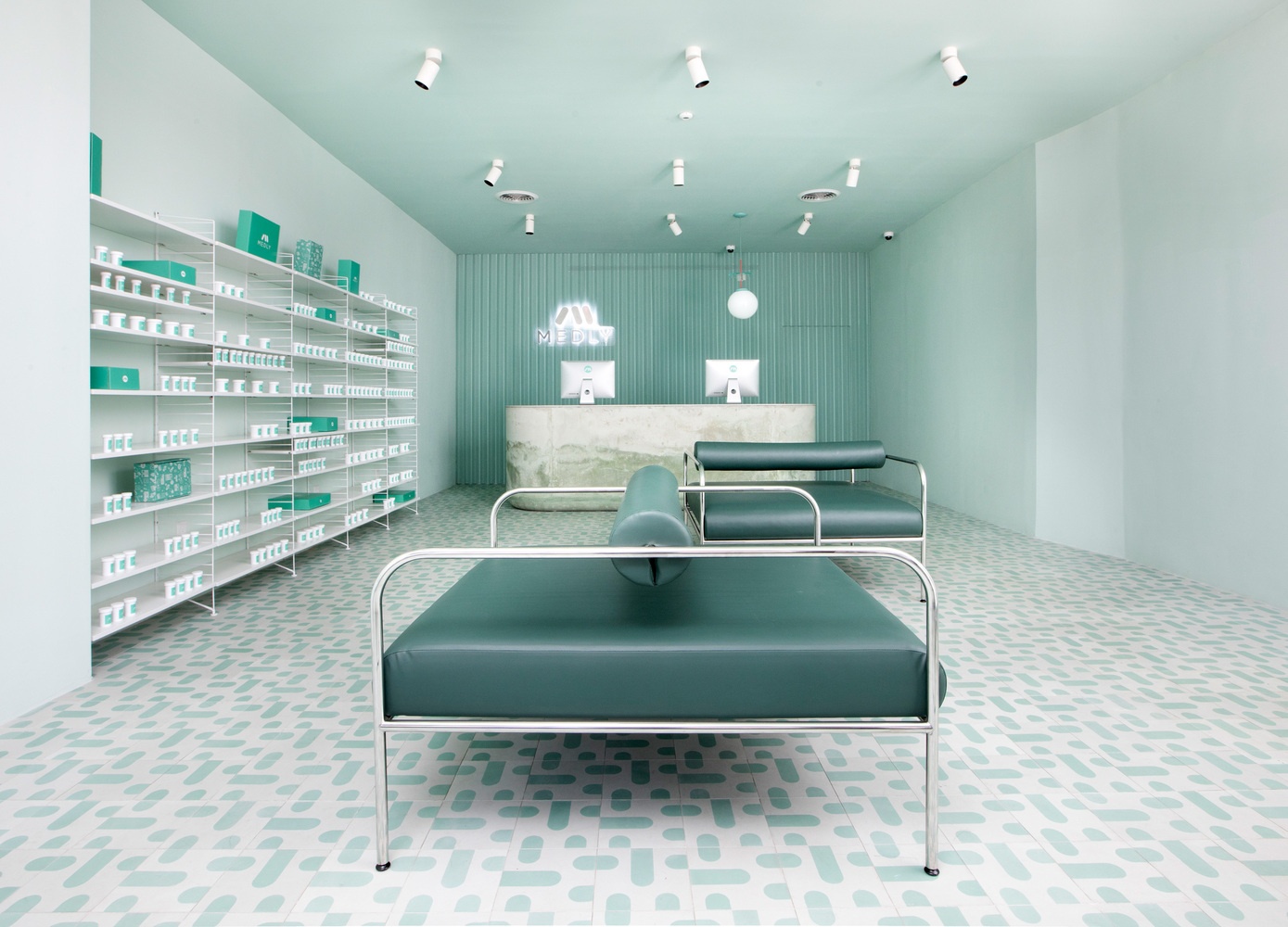 Light aqua color scheme signed local firm Sergio Mannino. Photo courtesy: Archdaily
Light aqua color scheme signed local firm Sergio Mannino. Photo courtesy: Archdaily
 Delicate white string shelves contributes to the clean design expression. Photo courtesy: Dezeen
Delicate white string shelves contributes to the clean design expression. Photo courtesy: Dezeen
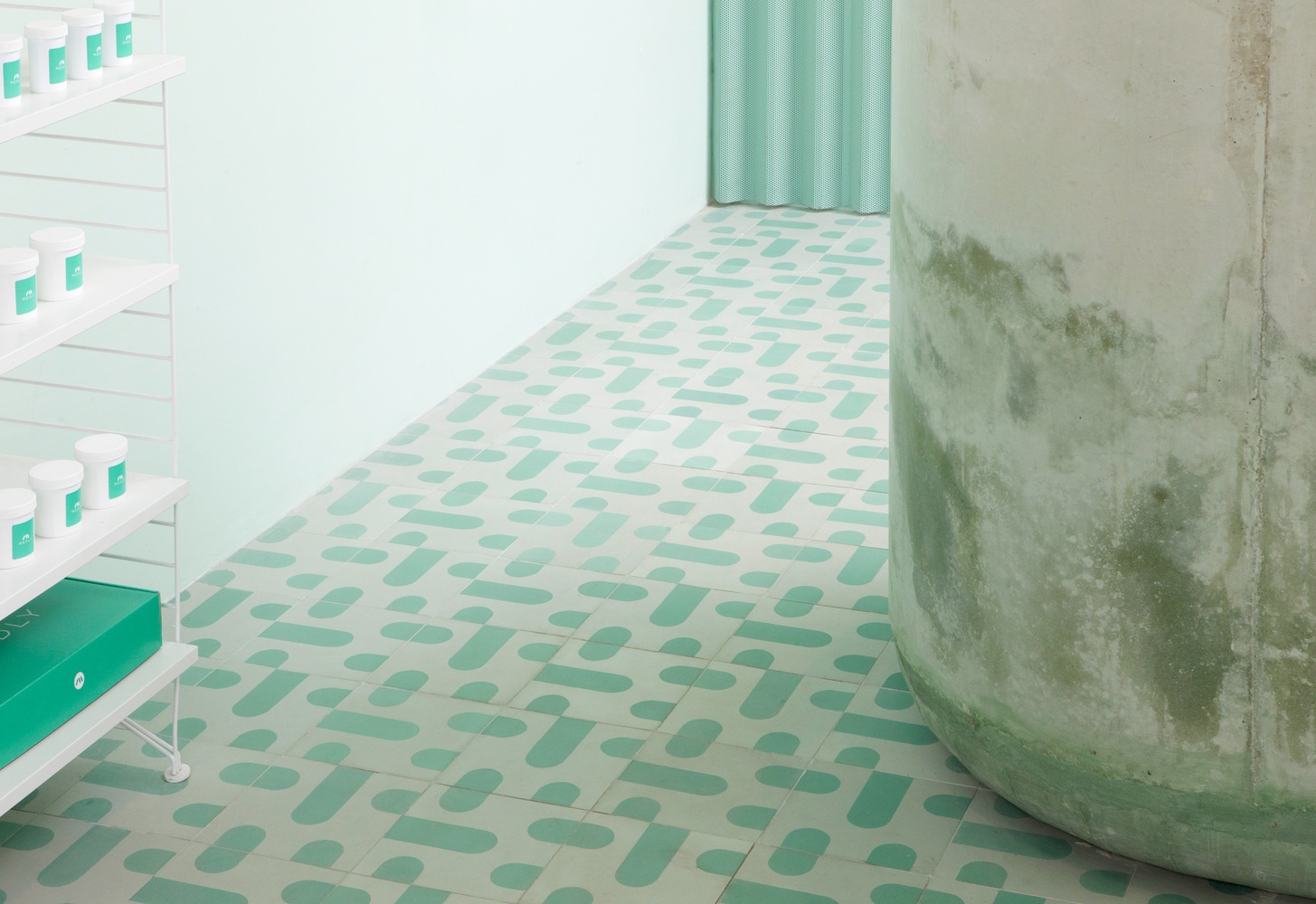 Geometric flooring that replicates the pattern of pills. Photo courtesy: Archdaily
Geometric flooring that replicates the pattern of pills. Photo courtesy: Archdaily
Fun, elegant and playful, Medly joins the list of drugstores that uses interior design to break free from the average pharmacy's traditional character.
conclusion
The trend of comforting hospital and healthcare designs brimming with art, colours and innovative design solutions suggest that the institutional hospital vibe is a thing of the past. By incorporating design thinking into their planning process, executives supported by designers and architects are turning the medical facility into an innovator renowned for architecture and interior ideas that not only inspire staff and visitors but improve the wellbeing of their patients.
